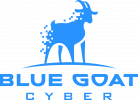The process of submitting a 510(k) application to the U.S. Food and Drug Administration (FDA) for medical devices is integral to gaining market clearance. However, it is vital to consider the security controls required in this submission process to ensure compliance with regulatory standards and protect sensitive data. In this article, we will explore the importance of security controls in 510(k) submissions and the key elements involved in implementing effective security measures.
Understanding the Importance of Security Controls in 510(k) Submissions
When it comes to submitting a 510(k) application, security controls play a crucial role in ensuring the integrity, confidentiality, and availability of the data involved. These controls are designed to protect not only sensitive information but also the overall credibility of the submission.

The Role of Security Controls in Regulatory Compliance
Compliance with regulatory standards is of utmost importance in the medical device industry. It assures stakeholders that the products are safe and effective. Security controls, in this context, serve as a means to achieve compliance by safeguarding sensitive data from unauthorized access or tampering.
For instance, in the United States, the Food and Drug Administration (FDA) requires medical device manufacturers to adhere to strict security guidelines outlined in the Federal Information Security Management Act (FISMA). These guidelines encompass various security controls, such as access controls, encryption, and incident response plans. By implementing these controls, companies demonstrate their commitment to regulatory compliance and the protection of patient data.
The Impact of Security Controls on Data Protection
Data protection is a critical aspect of any 510(k) submission. Security controls are designed to prevent data breaches, unauthorized access, and ensure the confidentiality and integrity of the information exchanged throughout the submission process. By implementing robust security controls, companies can reduce the risk of data compromise and potential legal repercussions.
Furthermore, security controls also play a vital role in protecting intellectual property. Medical device companies invest significant time, effort, and resources in research and development to bring innovative products to market. By implementing security controls, these companies can safeguard their proprietary information, preventing unauthorized access and potential theft of valuable intellectual property.
Key Elements of Security Controls for 510(k) Submission
Identifying Necessary Security Controls
Before diving into implementing security controls, it is essential to identify the specific controls required for a successful 510(k) submission. Conducting a comprehensive risk assessment and understanding the regulatory guidelines are crucial steps. This enables companies to identify potential vulnerabilities and proactively address them.

During the risk assessment process, companies meticulously analyze the potential threats and vulnerabilities associated with their medical devices. They consider factors such as the sensitivity of the transmitted data, the possible impact of a security breach, and the likelihood of an attack. Companies gain a deeper understanding of the security controls needed to protect their 510(k) submission by conducting a thorough assessment.
Implementing Effective Security Measures
Once the necessary security controls have been identified, implementation becomes paramount. Companies should focus on encryption techniques, secure data storage, controlled access to sensitive information, and regularly monitoring potential security threats. These measures enhance the overall security posture of the 510(k) submission process.
Encryption techniques are vital in safeguarding sensitive data during the 510(k) submission process. Companies employ advanced encryption algorithms to ensure that any data transmitted or stored remains confidential and protected from unauthorized access. Additionally, secure data storage practices, such as utilizing secure servers and implementing data backup procedures, are crucial in mitigating the risk of data loss or unauthorized disclosure.
The Intersection of Compliance and Data Protection
In the realm of 510(k) submissions, compliance and data protection go hand in hand. However, companies often face challenges in balancing these two aspects.

Regarding compliance requirements and data security, finding the right equilibrium is crucial. Adhering to regulatory requirements is essential, but not at the expense of compromising data security. Striking a balance between compliance measures and robust data protection controls is a delicate dance that requires careful consideration.
One way to achieve this balance is by leveraging advanced encryption technologies. Encryption plays a vital role in safeguarding sensitive data, ensuring it remains secure and protected from unauthorized access. By implementing strong encryption protocols, companies can meet compliance requirements while fortifying their data protection measures.
Regular system assessments also play a pivotal role in maintaining the delicate balance between compliance and data security. These assessments help identify vulnerabilities and weaknesses in the system, enabling companies to take proactive measures to address them. By conducting regular audits and assessments, organizations can stay one step ahead of potential threats and ensure that their compliance and data protection efforts remain robust.
Furthermore, staff training programs are essential to ensure compliance and data protection efforts are effectively implemented throughout the organization. By educating employees about the importance of compliance and data security, companies can foster a culture of awareness and responsibility. Training programs should cover topics such as data handling best practices, recognizing potential security risks, and understanding compliance requirements. Companies can strengthen their compliance and data protection efforts by empowering employees with the knowledge and skills they need.
Addressing Potential Compliance and Security Conflicts
While striving to balance compliance and data security, companies must also proactively identify potential conflicts between the two. It is not uncommon for compliance requirements to clash with effective security controls, creating a challenging situation for organizations.
To navigate these challenges successfully, companies should develop a robust risk management framework that addresses compliance and security. This framework should involve a systematic approach to identify, assess, and mitigate compliance and data protection risks. By integrating compliance and security considerations into the risk management process, organizations can proactively identify and resolve potential conflicts.
Collaboration between regulatory affairs teams and information security personnel is vital in achieving a harmonious balance between compliance and data protection. These two teams should work hand in hand, sharing insights, knowledge, and expertise to ensure that compliance requirements and security controls are met simultaneously. By fostering strong collaboration, companies can bridge the gap between compliance and data protection, creating a unified approach that addresses both aspects effectively.
Evaluating the Effectiveness of Your Security Controls
Continuously evaluating security controls is imperative to ensure their effectiveness and identify potential weaknesses or vulnerabilities.
When it comes to evaluating the effectiveness of security controls, it is not enough to simply implement them and forget about them. Regular audits play a crucial role in assessing the strength of your security measures. By conducting internal and external audits, companies gain valuable insights into the effectiveness of their security controls and identify improvement areas.
During an audit, various aspects of security controls are examined, including access controls, network security, data protection, and incident response procedures. Auditors assess whether these controls are properly implemented and functioning as intended. They also look for any gaps or vulnerabilities that potential threats could exploit.
Regular Auditing of Security Controls
Regular audits of security controls enable companies to assess their effectiveness and identify areas for improvement. By performing internal and external audits, organizations gain valuable insights into their security measures and can take necessary action to enhance their overall security posture.
Internal audits involve an in-depth review of the company’s security controls by an internal team or a third-party auditor. This helps identify any weaknesses or gaps in the controls and provides an opportunity to address them before malicious actors exploit them. External audits, on the other hand, involve an independent assessment of the company’s security controls by a third-party auditor. This provides an unbiased evaluation of the controls and helps ensure compliance with industry standards and regulations.
Updating and Improving Security Measures
Considering the rapidly evolving threat landscape, staying up to date with the latest security technologies and best practices is essential. Companies should continually evaluate their security controls and make necessary adjustments to mitigate emerging risks. By remaining proactive in this regard, companies can adapt to evolving threats and maintain compliance with regulatory requirements.
Regularly updating and improving security measures is crucial to keep up with the ever-changing tactics employed by cybercriminals. This includes staying informed about the latest security vulnerabilities and emerging threats and implementing appropriate countermeasures. It also involves regularly reviewing and updating security policies, procedures, and employee training programs to ensure they align with current best practices.
Furthermore, organizations should consider leveraging advanced technologies such as artificial intelligence and machine learning to enhance their security controls. These technologies can help detect and respond to threats in real-time, providing additional protection against sophisticated attacks.
Future Trends in Security Controls and Compliance
The security controls and compliance field is ever-evolving, necessitating organizations to anticipate future trends and adapt accordingly.
Anticipating Changes in Regulatory Requirements
Regulatory frameworks are subject to change to address emerging risks and technological advances. Medical device companies must stay informed about potential changes in regulatory requirements and proactively adjust their security controls to ensure compliance.
Adapting Security Controls to Evolving Threats
As the threat landscape continues evolving, companies must stay one step ahead. By adopting emerging technologies such as artificial intelligence-based threat detection systems and implementing proactive security measures, organizations can bolster their defenses against constantly evolving threats.
One emerging trend in security controls is the use of blockchain technology. Blockchain, originally developed for cryptocurrencies like Bitcoin, is now being explored for its potential to enhance security controls and compliance. The decentralized nature of blockchain makes it resistant to tampering and fraud, providing additional protection for sensitive data. Medical device companies can leverage blockchain technology to ensure the integrity and transparency of their security controls, making it harder for malicious actors to compromise their systems.
Another trend that is gaining traction in the field of security controls is the integration of machine learning algorithms. Machine learning algorithms can analyze vast amounts of data and identify patterns that may indicate potential security threats. By continuously learning from new data, these algorithms can adapt and improve their threat detection capabilities over time. Medical device companies can leverage machine learning algorithms to enhance their security controls, enabling them to detect and respond to emerging threats more effectively.
In conclusion, security controls are vital in ensuring compliance and protecting sensitive data throughout the 510(k) submission process. By understanding the importance of security controls, implementing effective measures, and balancing compliance and data protection, medical device companies can navigate the regulatory landscape and safeguard their submissions. Furthermore, continuous evaluation and adaptation of security controls enable organizations to stay resilient against emerging threats and maintain compliance with changing regulatory requirements.
As you navigate the complexities of 510(k) submissions and strive to maintain the delicate balance between compliance and robust data security, remember that you don’t have to do it alone. Blue Goat Cyber, a Veteran-Owned business, specializes in medical device cybersecurity and is dedicated to helping you protect your sensitive data with our comprehensive B2B cybersecurity services. From penetration testing to HIPAA and FDA compliance, we have the expertise to secure your business and products against cyber threats. Contact us today for cybersecurity help and partner with a team that’s passionate about safeguarding your success.


